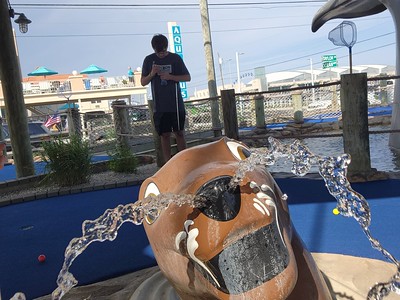
Hello,
I had high hopes to do more reading this month but international travel and
getting sick got in the way. So here are just two articles for some light
summer reading.
If you know someone who wants to sign up to receive these summaries, they can
do so at http://bit.ly/sciencejon (no need to email me).
RANGELANDS AND SOIL C:
Provencher et al. 2023 models the potential carbon gains (and costs) to restore
degraded rangelands (remotely sensed) in UT and NV (and some of OR, ID, and
CA). The restoration sometimes involves herbicide to kill invasives and always
involves: seeding w/ native perennial plants, excluding grazing for only 3
years from pixels that were seeded (grazing resumes after 3 years), and ending
fire suppression. They found that invasive annual species like cheatgrass are
more common than other analyses have found (Fig 8). See Table 3 for the key
results: sequestration rates were very low in two sites (compared to less arid
ecosystems) and modest in a third. Overall they ranged from 0.022 - 0.730 t
CO2e / ha / yr (0.6-20 g C / m2 / yr). The best case scenario is in UT where
~$66 / ha delivers ~0.73 t CO2e/yr (+-50%), or ~$90 / t CO2e / yr (comparable
to reforestation). Conversely the other ranches would be >$3,000 / t CO2e /
yr. But selecting sites likely to be favorable to carbon accumulation could
help make the case for ecological restoration (with empirical data needed if
one wanted to sell carbon credits). And there is a LOT of degraded rangeland
globally, so there's room to scale. To make carbon trading feasible in the
Intermountain West, making this kind of seeding cheaper and more successful is
important.
INVASIVE SPECIES:
I couldn't resist reading Clark et al. 2023 right away despite my sad backlog.
I once had a native plant garden guy tell me "at best non-native plants
offer no value to pollinators and other wildlife, and most are harmful."
Obviously false as an absolute! But how do they compare? Clark looked at 10
species in a Connecticut forest and found some invasive species (like
honeysuckle) had more bugs (mass and protein) than the average for natives, but
others (Japanese barberry) had fewer bugs. But birds seemed to forage both
equally. It's a tiny study and I wish they hadn't pooled all native species,
but I do like a study that counters "it depends!" to a truism in
conservation.
REFERENCES:
Provencher, L., Byer, S., Frid, L., Senthivasan, S., Badik, K. J., & Szabo, K. (2023). Carbon Sequestration in Degraded Intermountain West Rangelands, United States. Rangeland Ecology & Management, 90, 22–34. https://doi.org/10.1016/j.rama.2023.05.004
Sincerely,
Jon
p.s. This is a photo of a fountain at a mini golf course in Wildwood, NJ
No comments:
Post a Comment
Questions, comments, suggestions, and complaints welcome.